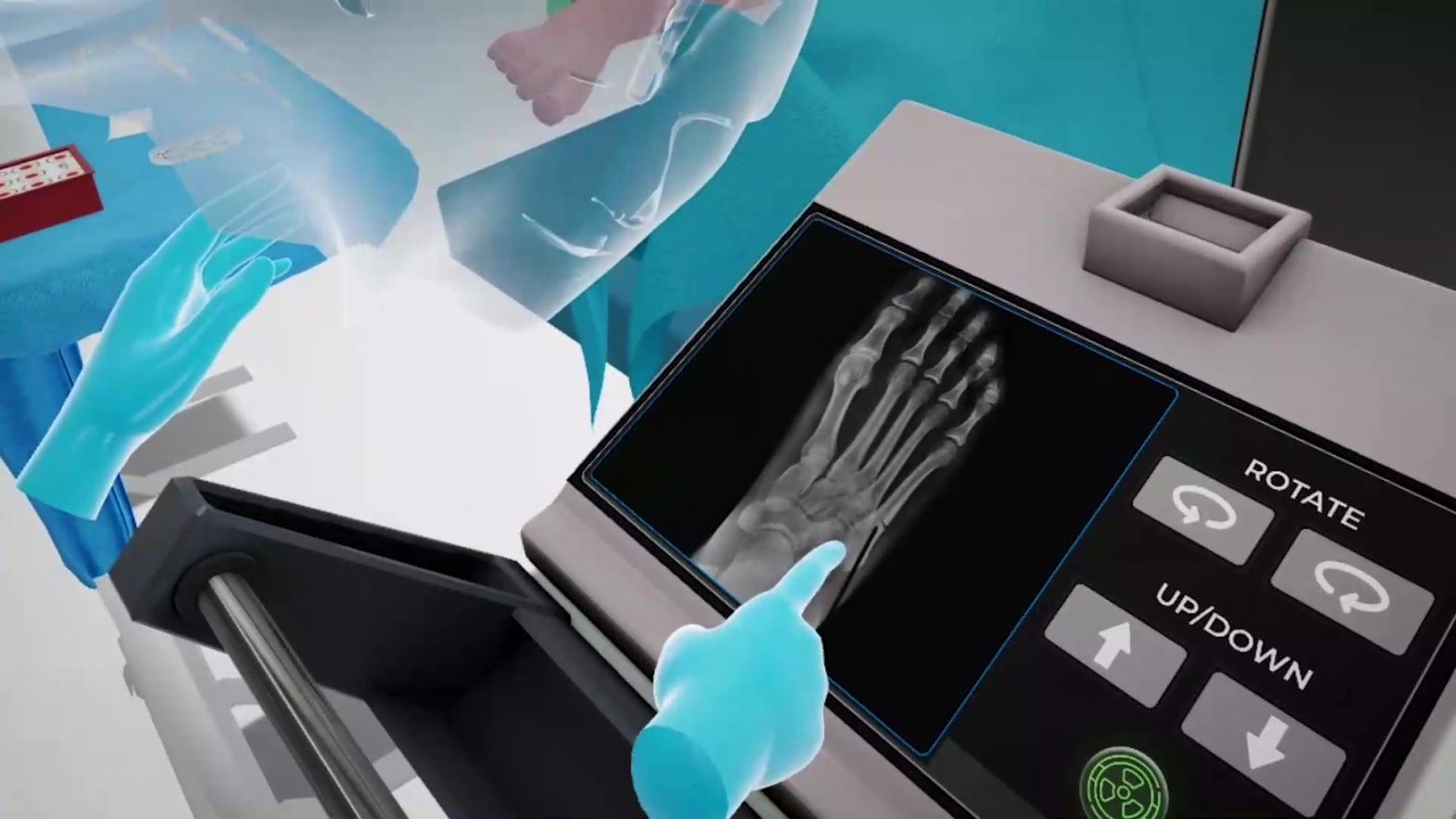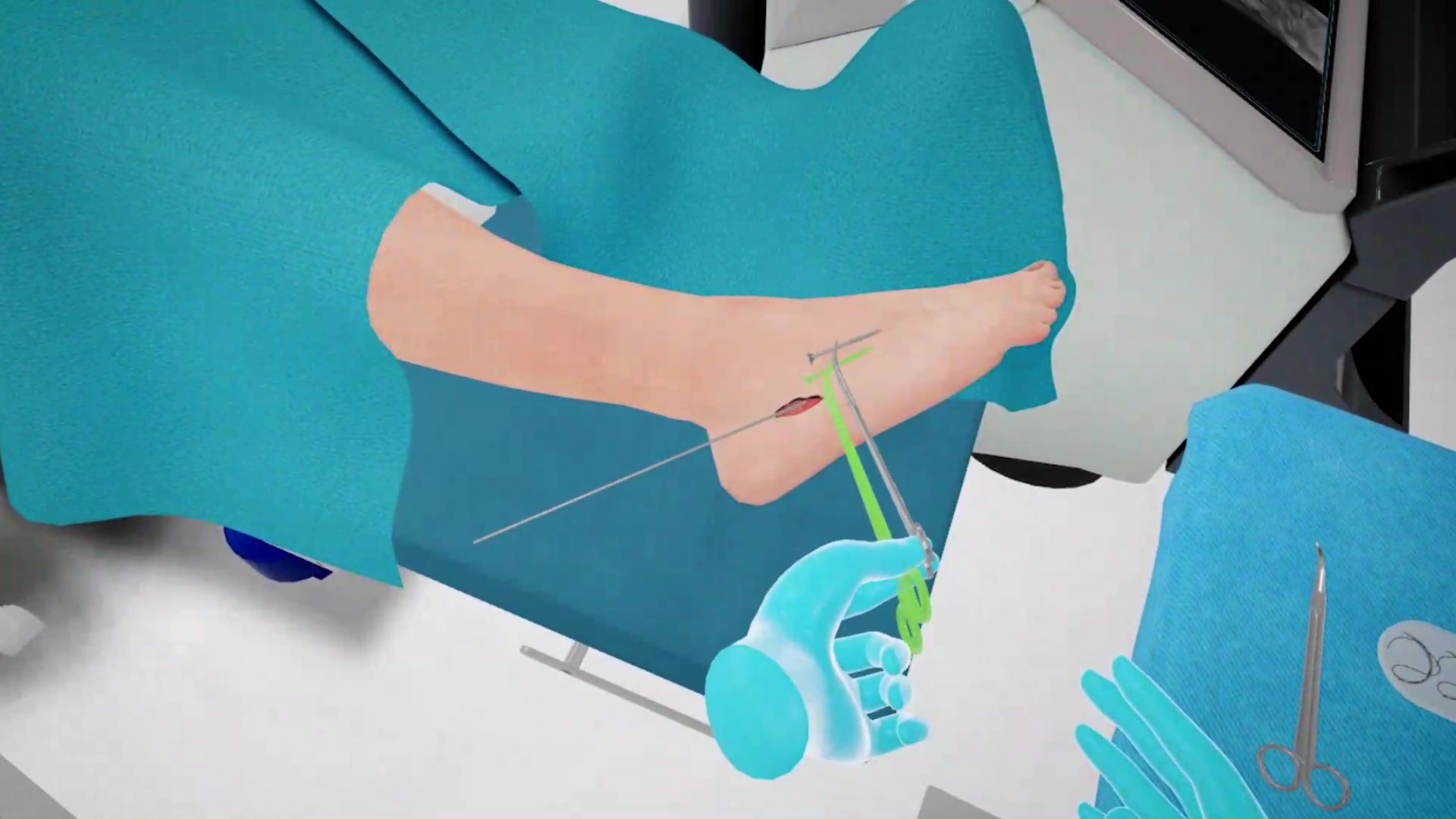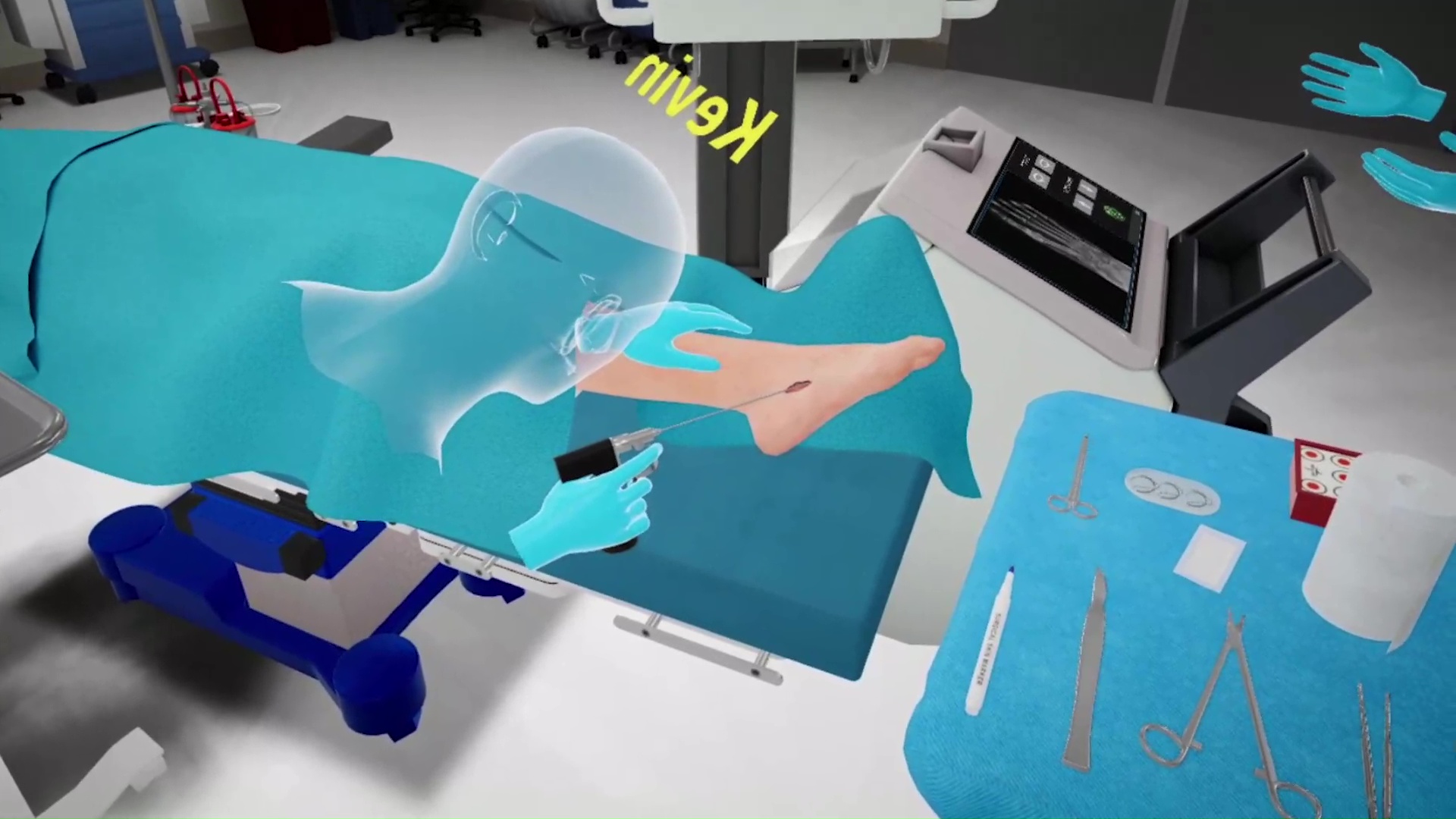Jones Fracture
Jones fracture refers to a fracture in the fifth metatarsal bone in the foot. This is the bone that connects the pinkie toe to the base of the foot. Surgery is one of the most effective ways to treat this fracture. Adequate and quality training is essential to perform the surgery successfully without leaving any room for complications.
This VR simulation for Jones Fracture is designed to help healthcare professionals practice the procedure of performing a Jones fracture surgery in a safe and controlled virtual environment with a virtual patient. With both training and assessment modes, learners can perform the procedure and assess themselves on their performance.
- Accurately identify incision location
- Precisely drill through affected bone
- Confirm the location by using x-ray imaging
- Practice accurate insertion of fixation device
- Suture incision site following proper techniques

- Johnson, A. B., & Smith, C. D. (2020). Surgical Techniques in Foot and Ankle Surgery: A Comprehensive Guide. Springer.
- Coughlin, M. J., & Mann, R. A. (2014). Surgery of the Foot and Ankle (9th ed.). Mosby.
- Myerson, M. S. (2017). Jones Fractures: Evaluation and Management. Foot & Ankle International, 38(6), 653-659.
 Multi-player
Multi-player
Sessions Physics-based Interaction
Physics-based Interaction
Core Skills Training

Jones Fracture
As a part of this Jones Fracture surgery procedure, the user is required to identify the incision site and make the incision using a scalpel. This incision is made to access the fractured bone so that it can be aligned. The learner will proceed with exposing the extensor tendon and drilling through the bone, all the while taking x-ray images to check on the position of the drill. Next the learner will insert the guidewire followed by placing the screw into the bone. Once the screw is in place the learner will suture the incision. Bandaging the incision area will complete the procedure.
All necessary affordances are provided to complete the procedure with efficiency.
Training
With prompts, guidance and affordances learners are hand-held through the process to practice the procedure in a virtual environment with a virtual patient.
- Photorealistic virtual environment
- Physics-based interactions
- Detailed instructions
- Adequate affordances to assist in task completion

Assessment
Test acquired skills to perform the procedures from start to finish without prompts. An incorrect step will take the learner back to the start to start afresh.
- Live scoring
- Instant feedback
- Adequate affordances for efficient performance
- Time tracking to monitor activity completion






